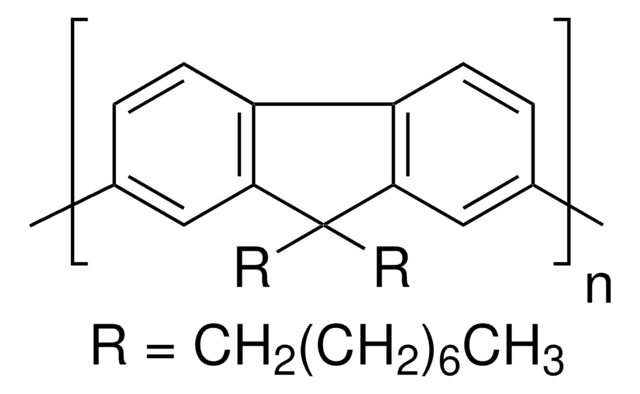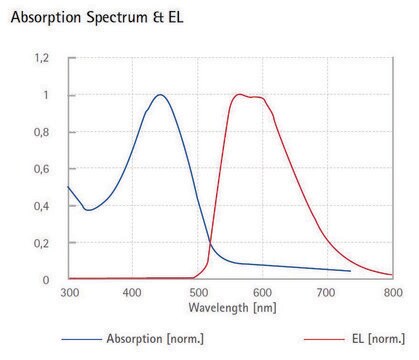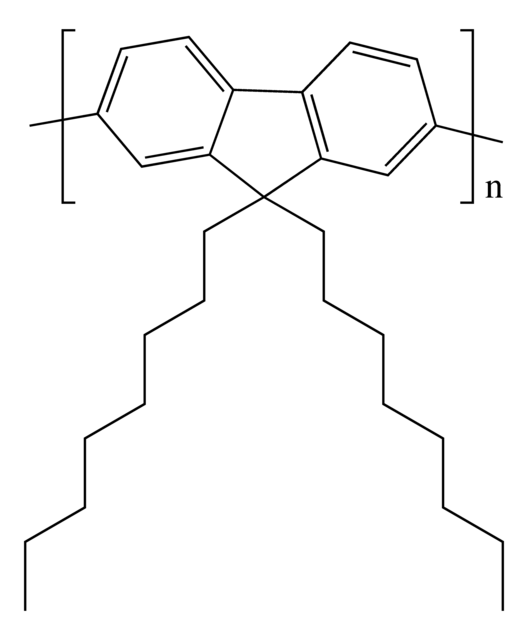571032
Poly[9,9-bis-(2-ethylhexyl)-9H-fluorene-2,7-diyl]
light-emitting λem 409 nm (in chloroform)
Synonym(s):
Poly[9,9-di-(2′-ethylhexyl)fluorenyl-2,7-diyl]
About This Item
Recommended Products
Quality Level
transition temp
Tg (DSC) 45 °C (onset)
solubility
THF: soluble
chloroform: soluble
toluene: soluble
xylene: soluble
λmax
374 nm
fluorescence
λex 362 nm; λem 409 nm in chloroform
SMILES string
C1(c2c(cccc2)c3c1cccc3)(CC(CCCC)CC)CC(CCCC)CC
InChI key
YJUVFJKHTNWDNU-UHFFFAOYSA-N
Related Categories
General description
Application
Storage Class Code
11 - Combustible Solids
WGK
WGK 3
Flash Point(F)
Not applicable
Flash Point(C)
Not applicable
Personal Protective Equipment
Choose from one of the most recent versions:
Already Own This Product?
Find documentation for the products that you have recently purchased in the Document Library.
Articles
Organic Semiconductor Laser Materials
Dr. Tan and researcher introduce recent trends in Self-healing Soft Electronic Materials and Devices. The emergence of smart, functional SHPs will be highly beneficial to the advancement of the next-generation self-healing soft electronic devices. Autonomously self-healing devices could help to minimize the need for repair or replacement of electronics and machines, potentially reducing the cost of materials and reducing electronic waste.
Our team of scientists has experience in all areas of research including Life Science, Material Science, Chemical Synthesis, Chromatography, Analytical and many others.
Contact Technical Service
![Poly[2-methoxy-5-(2-ethylhexyloxy)-1,4-phenylenevinylene] average Mn 40,000-70,000](/deepweb/assets/sigmaaldrich/product/structures/344/488/b8f8179d-3970-4deb-a754-adda88cdb36f/640/b8f8179d-3970-4deb-a754-adda88cdb36f.png)






